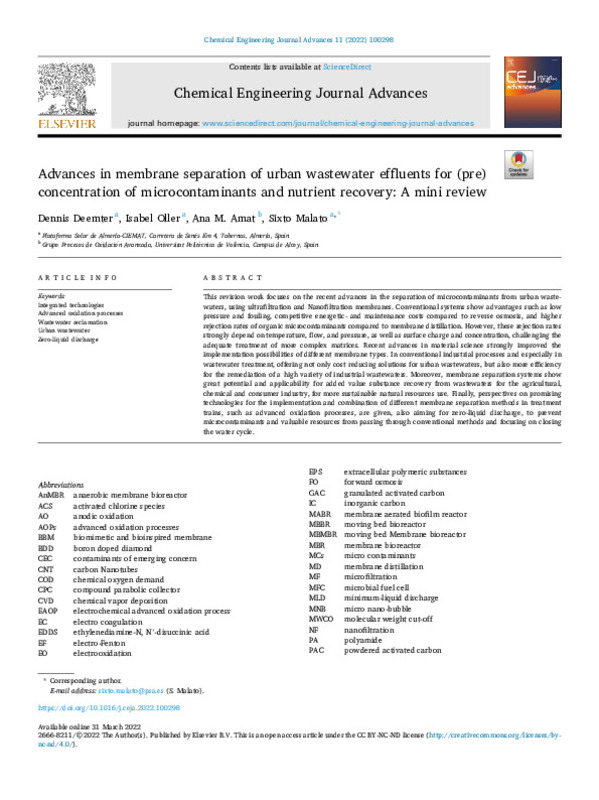JavaScript is disabled for your browser. Some features of this site may not work without it.
Buscar en RiuNet
Listar
Mi cuenta
Estadísticas
Ayuda RiuNet
Admin. UPV
Advances in membrane separation of urban wastewater effluents for (pre) concentration of microcontaminants and nutrient recovery: A mini review
Mostrar el registro completo del ítem
Deemter, D.; Oller, I.; Amat Payá, AM.; Malato, S. (2022). Advances in membrane separation of urban wastewater effluents for (pre) concentration of microcontaminants and nutrient recovery: A mini review. Chemical Engineering Journal Advances. 11:1-11. https://doi.org/10.1016/j.ceja.2022.100298
Por favor, use este identificador para citar o enlazar este ítem: http://hdl.handle.net/10251/188834
Ficheros en el ítem
Metadatos del ítem
| Título: | Advances in membrane separation of urban wastewater effluents for (pre) concentration of microcontaminants and nutrient recovery: A mini review | |
| Autor: | Deemter, Dennis Oller, Isabel Malato, Sixto | |
| Entidad UPV: |
|
|
| Fecha difusión: |
|
|
| Resumen: |
[EN] This revision work focuses on the recent advances in the separation of microcontaminants from urban wastewaters, using ultrafiltration and Nanofiltration membranes. Conventional systems show advantages such as low ...[+]
|
|
| Palabras clave: |
|
|
| Derechos de uso: | Reconocimiento - No comercial - Sin obra derivada (by-nc-nd) | |
| Fuente: |
|
|
| DOI: |
|
|
| Editorial: |
|
|
| Versión del editor: | https://doi.org/10.1016/j.ceja.2022.100298 | |
| Código del Proyecto: |
|
|
| Agradecimientos: |
This paper is part of a project that has received funding from the European Union's Horizon 2020 research and innovation program under the Marie Sk¿odowska-Curie grant agreement No 765860. The authors wish to thank the ...[+]
|
|
| Tipo: |
|









